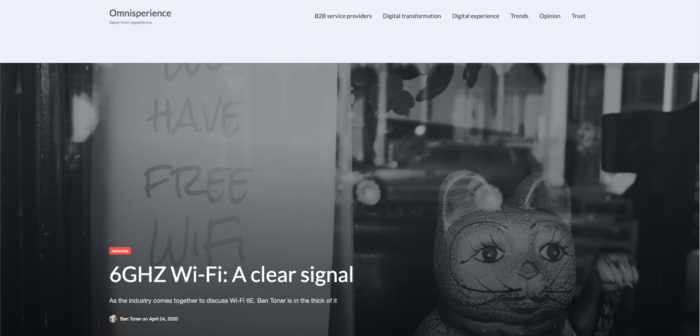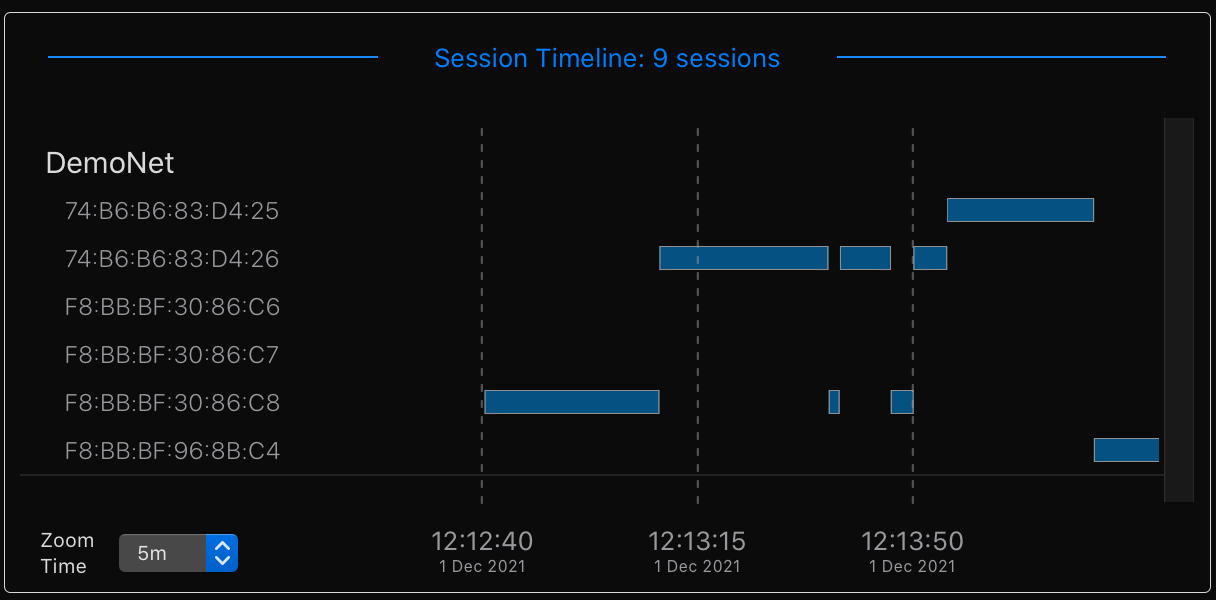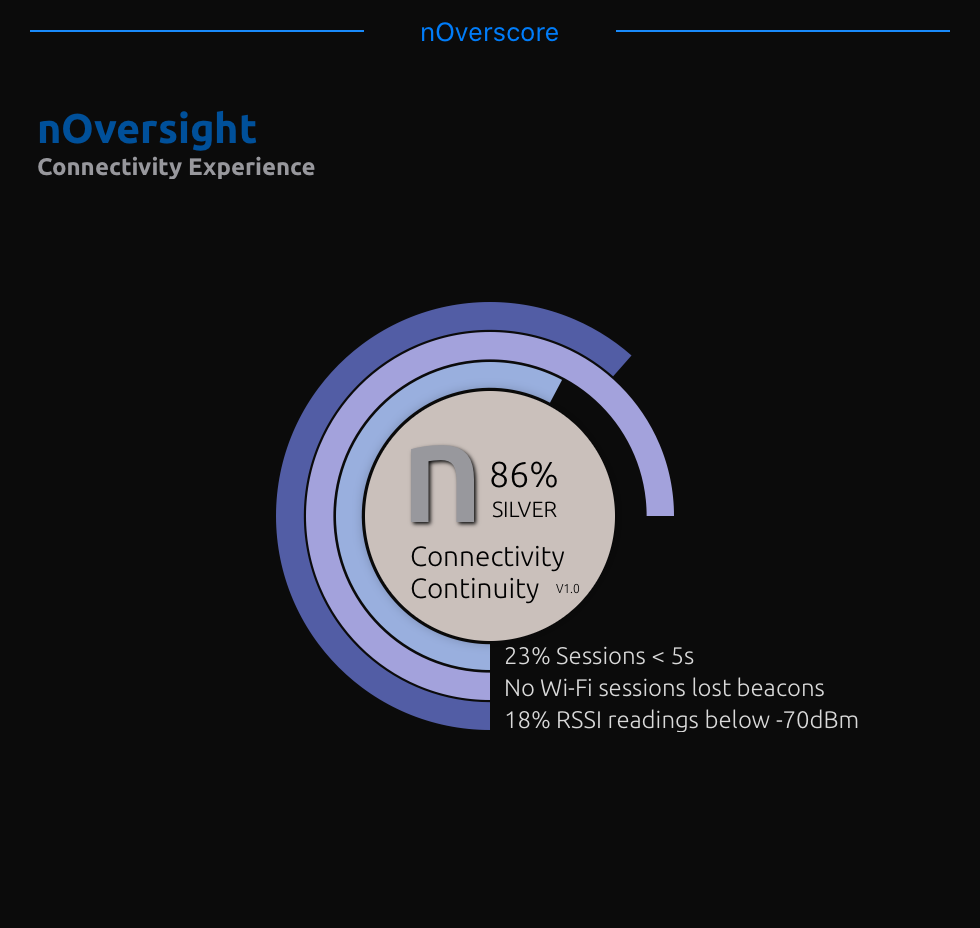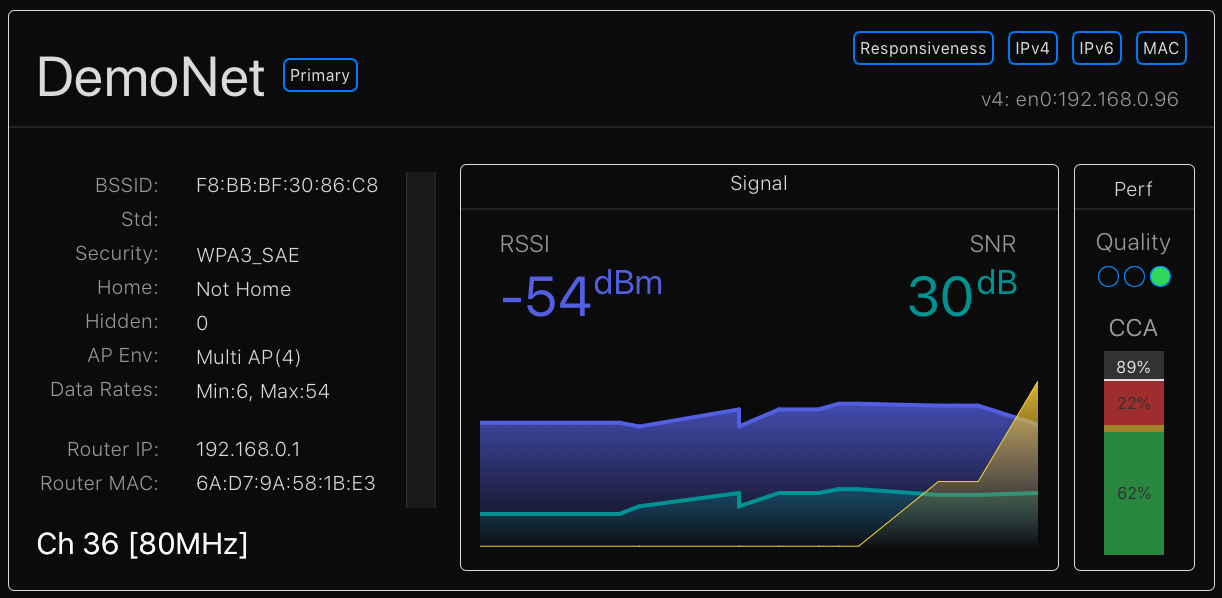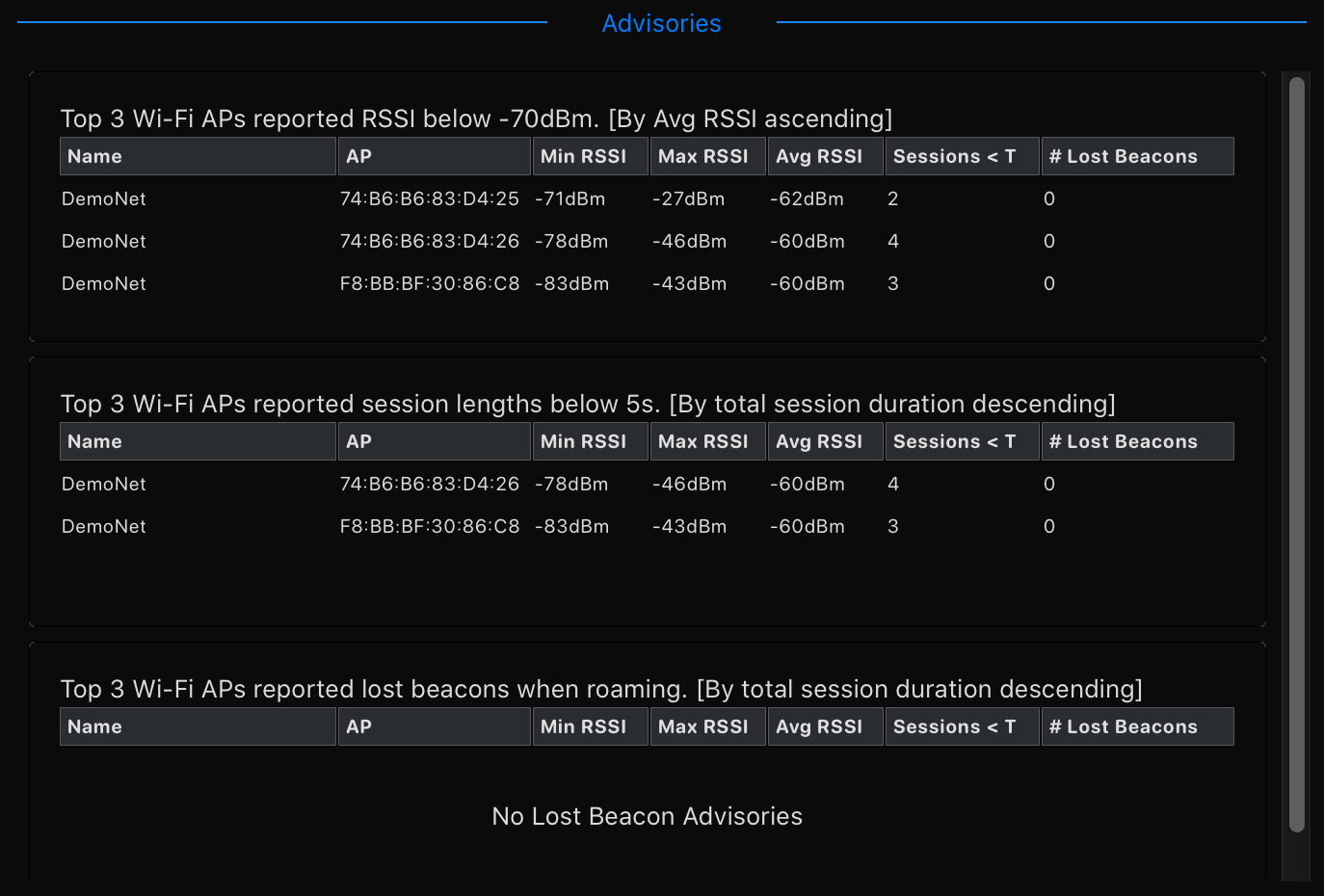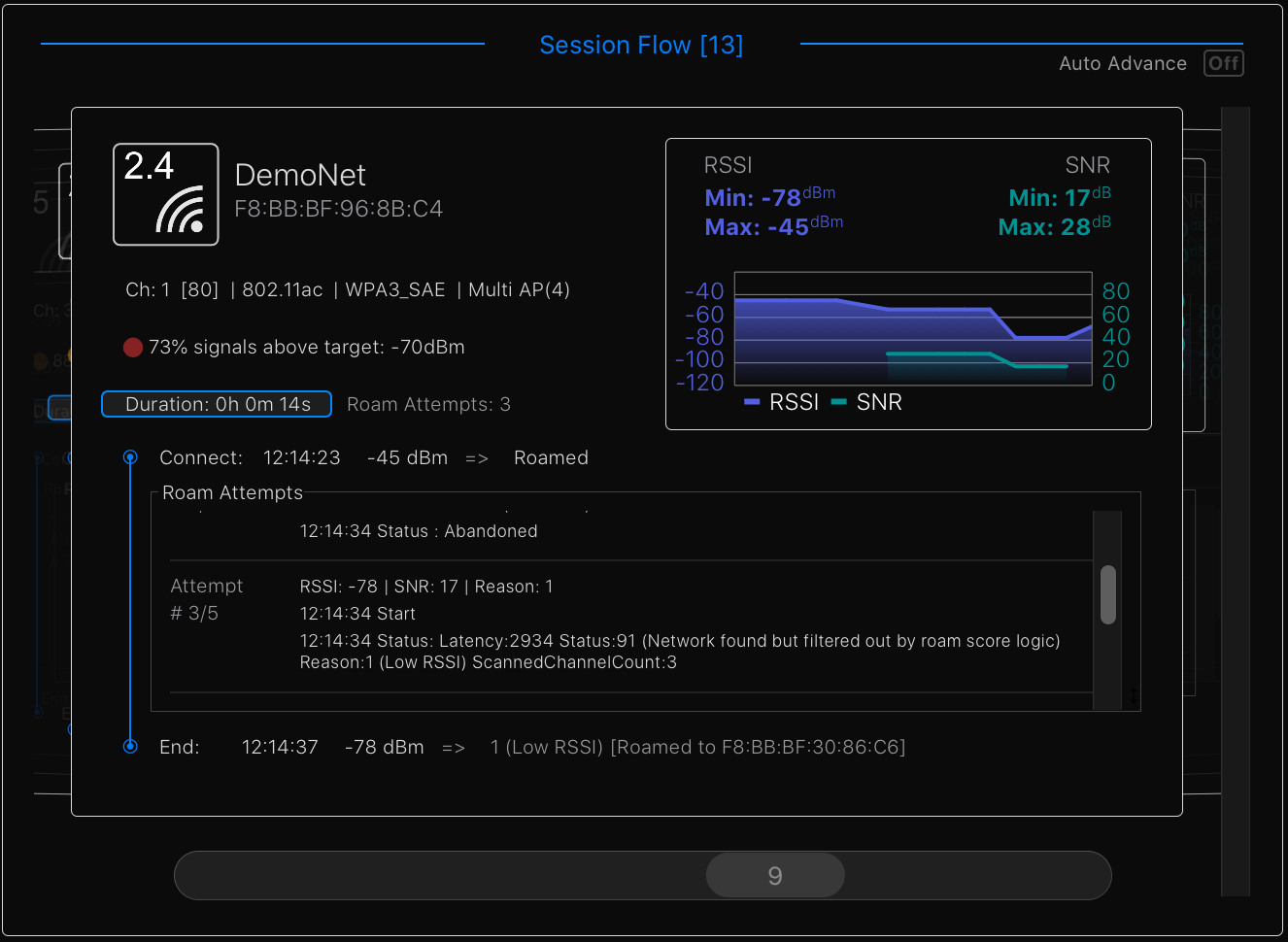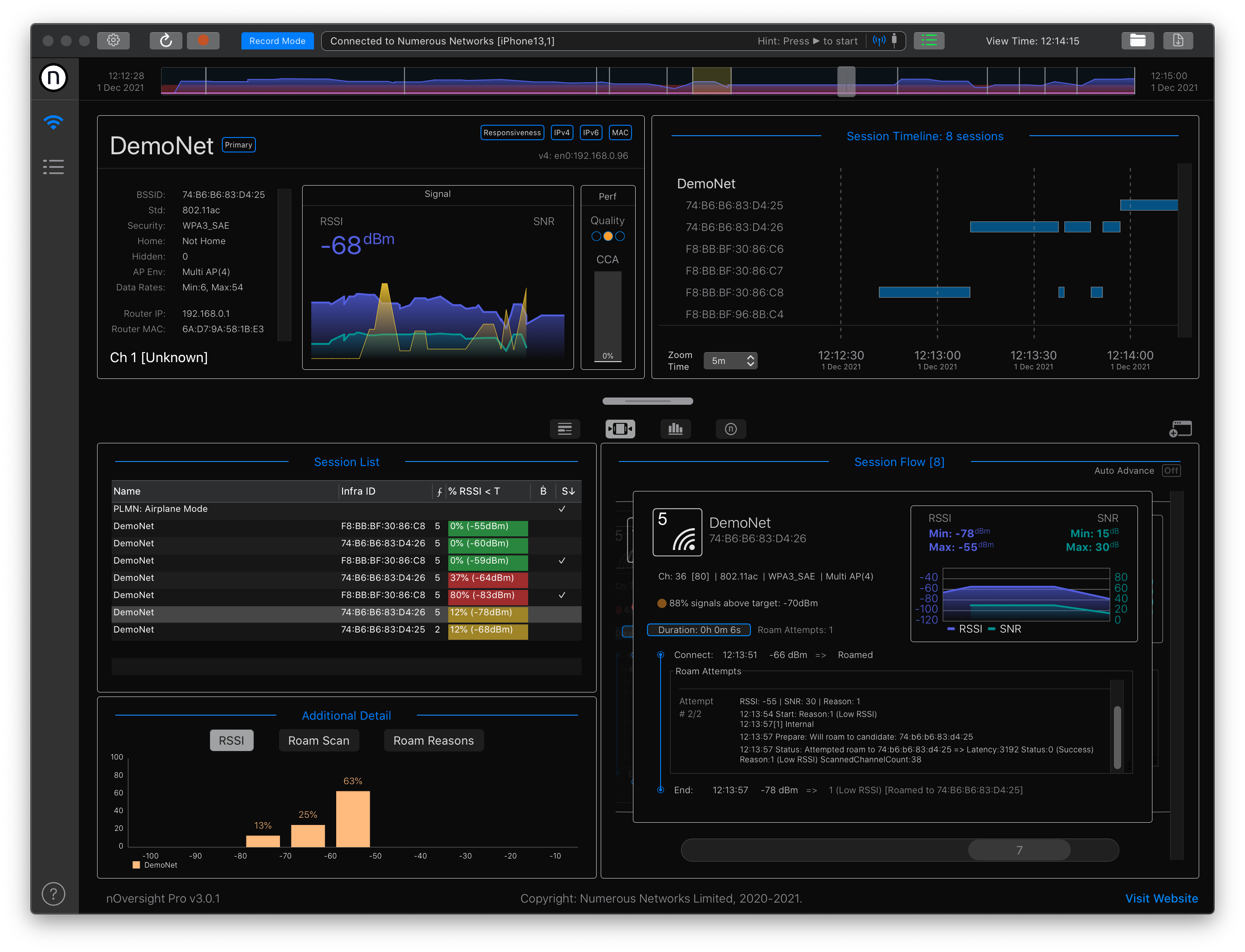This review on 6GHz was written for Omnisperience. The article can also be seen here.
On 24 April 2020 the industry gathered to discuss Wi-Fi 6E – the next ‘game changer’ in the Wi-Fi industry. Organised by Wi-Fi NOW and headlined by FCC Chairman Ajit Pai, this virtual meet-up provided a fascinating insight into the journey, innovations and opportunities the new 6GHz spectrum allocation has to offer. Omnisperience were there to get the low-down and bring you the most interesting, and maybe lesser known points.
Throughout the event there was one clear message on repeat: Wi-Fi 6 technology coupled with a new 6GHz band, collectively known as Wi-Fi 6E, is the most significant update since the birth of Wi-Fi 20 years ago. This sets up the growth and success of Wi-Fi for the next 20 years to come.
According to the Wi-Fi Alliance, the popularity of Wi-Fi has already been putting strain on the existing bands, including the more recent use of 5GHz. With the 6GHz band, there is now enough spectrum to avoid the performance-damaging effects of congestion and ensure the next 20 years of Wi-Fi can continue to prosper. Edgar Figueroa, Wi-Fi Alliance CEO discussed how this move safeguards $2 trillion of worldwide economic benefit enabled by Wi-Fi.
It’s not just spectrum, it’s innovative use of spectrum
Whereas the very wide 1200MHz of allocation is the main event, there are a couple of significant innovations within the regulations which are worth highlighting. These innovative rules allow for deployment of indoor and very low power applications in the near term, unlocking much-needed performance gains and the next wave of economic value.
- Low Power Indoors (LPI) – A specification for devices to operate indoors at a low power so that they do not cause interference to any existing incumbent services. By specifying low power indoor deployments separately, devices can immediately be deployed into homes and small businesses without the delay and cost required to approve the interference mitigation technologies which will otherwise be needed for outdoor or generally higher power equipment. The claim is that this simplification of the indoor access point will save approximately $100 per unit. Note: the power specification indoors may increase in the future as interference mitigation technologies become common place.
- Faster speeds incentivised – Despite a low power restriction, the wider bandwidth channels (which provide the fastest speeds) are allowed to operate at higher power than narrower channels. This is incentivising the use of wider, faster channels whenever possible – perfect for our video-stream guzzling needs. For the technical reader, the specification in 6GHz will now be stated as a constant power spectral density of 5dBm/MHz to offset the increase in noise in relation to bandwidth.
Deployments just got easier
Wi-Fi is popular and this pressurises the infrastructure. The automation of smartphones to connect whenever possible, mobile operators enabling SIM-based authentication, Passpoint, OpenRoaming and ‘Wi-Fi only’ devices all increase the number of connections.
Neighbouring or co-located Wi-Fi, people’s personal hotspots, interference from machinery and appliances, old or insufficient cabling, other unlicensed devices (such as Bluetooth) and legacy Wi-Fi devices all create resistance to the delivery of a good service.
There’s no need to say how excited the industry is to finally see a way past all these issues, and here are three of the most striking pain-reducers which come with the 6GHz band.
- Clean air – Wi-Fi has always had to support older standards. This backwards compatibility has meant concessions needed to be be made. Only Wi-Fi 6 and later standards will be allowed in 6GHz, meaning it can operate at full performance. As newer devices move off to 6GHz, it will also relieve the existing bands leaving legacy devices to have a better experience.
- 80 is the new 20 (MHz) – There’s always been a trade-off between dense coverage and performance. As more access points are needed to fill a large area, the channel size and throughput is reduced so each access point can have its own interference-free channel. Until now, many dense deployments ended up using 20MHz channels. The presentation from Cisco informed us that with Wi-Fi 6E there is sufficient spectrum available for 80MHz channels to be the new sustainable bandwidth for typical-density deployments – now providing the same robust coverage but with 4x the performance. Matt MacPherson, Cisco’s Wireless CTO coined the phrase “80 is the new 20” to the delight of every other presenter which quoted him thereafter.
- Cableless gigabit service – With so many channels available, it would now be possible to use some of them as a backbone between in-building access points – meaning no ethernet cables will be needed. The presentation by Charles Cheevers, CTO of CPE solutions at Commscope put forward an example whereby a home could have one large backbone using 320MHz channel bandwidth (likely using the next generation Wi-Fi 7 / 802.11be) with individual access points in each room of the building using 160MHz channels to provide close-range gigabit service.
And what are the timelines?
The FCC have led the way and now the question is: “when can it be deployed in the USA and around the world?”. As with most new technologies, there’s an infrastructure and a device component, so consumers and businesses need to understand when they can plan their adoption of the standard and access the appropriate solutions. Thanks to the deep insight of Chuck Lukaszewski at HPE/Aruba we now have the following insight (using his educated guesses).
Regulatory Timeline
The UK are mid-consultation as we speak. The European Commission is expected to make a decision in January 2021. Both the EU and UK could see the publication of new regulations in mid-2021. Note: these consultations are only for the lower part of the 6GHz band. The first Asia-Pacific countries may make decisions for the start of 2022.
Product Timeline
Consumer equipment supporting Low Power Indoor (LPI) is expected in the USA towards the end of this year, with devices launching during Mobile World Congress in March 2021. Enterprise equipment should be available soon after that. Shipments in the EU and UK should start in the latter half of 2021. A key enabler to higher power indoors or any outdoor equipment is the interference mitigating technology called Automated Frequency Coordination (AFC), which will not be certified until the close of 2021. This means that outdoor equipment is expected to ship in 2022. Enterprise environments should see >30% penetration of Wi-Fi 6E devices by the close of 2022.
Omnisperience’s view
This is certainly a great move and will allow Wi-Fi innovations to continue. The way that homes, enterprises and larger public areas are deployed may well change. The concept of the Wi-Fi mesh might evolve a bit more to allow gigabit backbones to be installed through a building with local hotspots in each area of demand. With that in place it will be possible to support high bandwidth streaming or VR applications in any location, within any environment, possible with minimal cabling.
The discussion covered the need for ‘bookended’ deployments – where access points are shipped with consuming devices such as set-top boxes. This concurs with our suggestion that it is time for services providers to plan for whole home solutions as standard. The customer should not be expected to pay for Wi-Fi extender devices, but maybe there are opportunities to monetise multi-room gigabit services.
Enterprises and industrial locations should expect to put Wi-Fi 6E solutions in place in late 2021 to early 2022.

